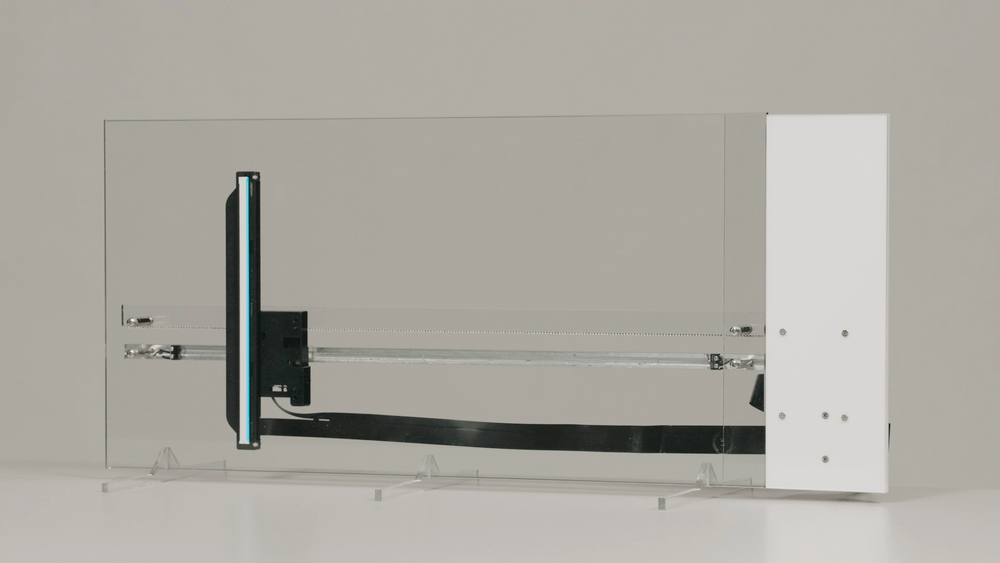Paul Dunham
Click::REVU blends physical and abstract characteristics of the Optophone, an early sonification device designed to “substitute the ear for the eye” by making optical signals audible. The work creates an illusory presence of the device through a scanner mechanism from a multifunction printer. The work depicts a form of optophonics informed by a relationship between contact image sensor (CIS) technology, prevalent in low-cost multifunction printers, and the Optophone via the light-sensing technologies developed through the 20th century. Intrinsically, the Optophone shares an indeterminate genealogy with these early optical devices. These devices were precursors to later developments that include the automated conversion of images into machine-readable text (optical character recognition), image sensors embedded in digital cameras and scanning technologies and the compact disc.
Click::REVU foregrounds the CIS mechanism as the primary visual element for the work. In its intended use, the mechanism is generally concealed within a larger structure, analogous to an organ within a body. Removed from the shroud of the darkness of its natural habitat and support structures (e.g., interfaces to image formation, formatting and engine control) the CIS itself has become visually impaired and struggles to see clearly in its new environment.
Artist Bio
Paul Dunham is a sound artist residing in Te Whanganui-a-Tara, Aotearoa. His artistic practice is situated at the intersection of media archaeology and sound-based art. Paul’s recent works have been focused on exploring the physical properties and historic materiality between past and contemporary media and their socio-cultural and technical conditions of existence. As media archaeology, these relationships are represented through the medium of sound as recordings, installations and performances as an examination of media’s interrelated and intertwined forms of technological development. By forming a dialogue between past and contemporary media technology, the creative output of his practice uses such relationships as their conceptual and aesthetic foundation.
